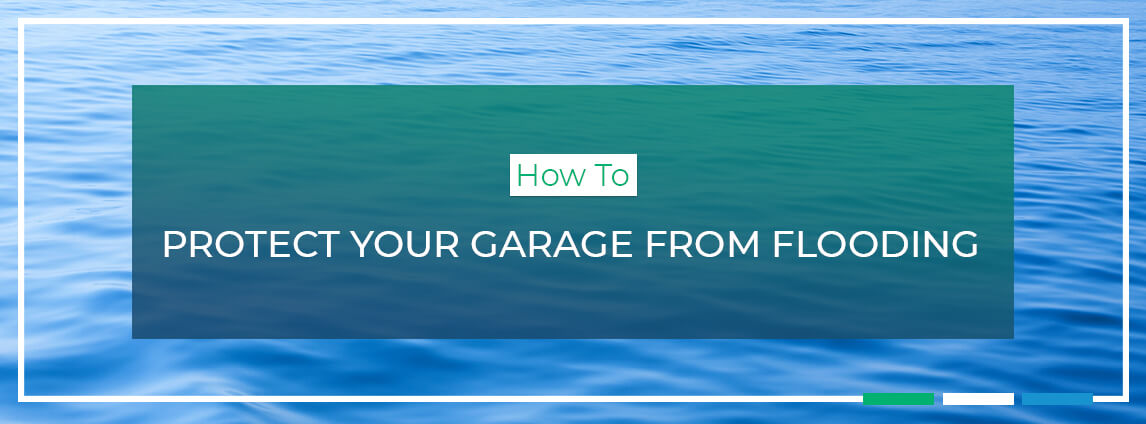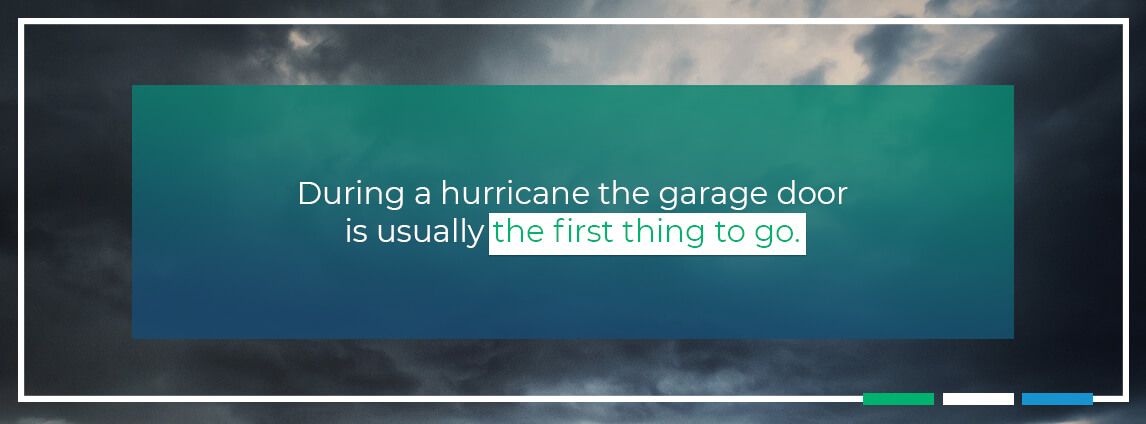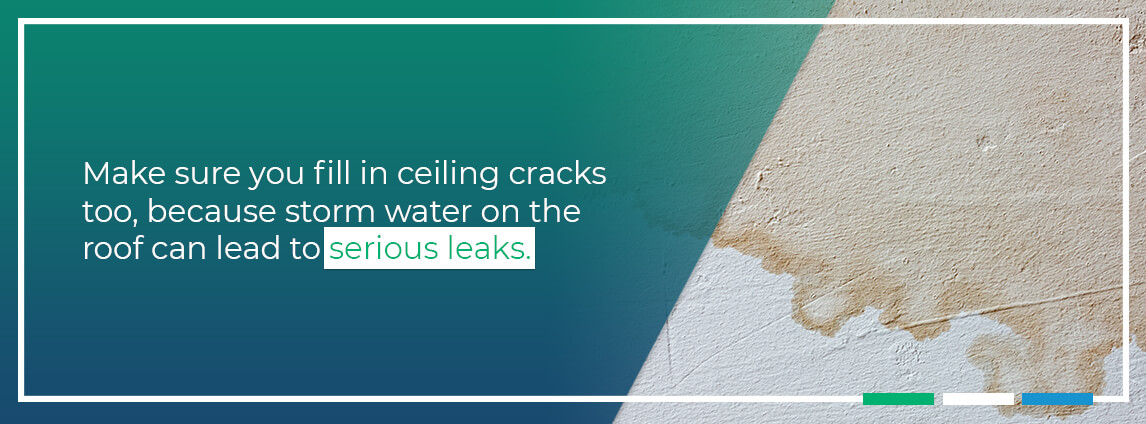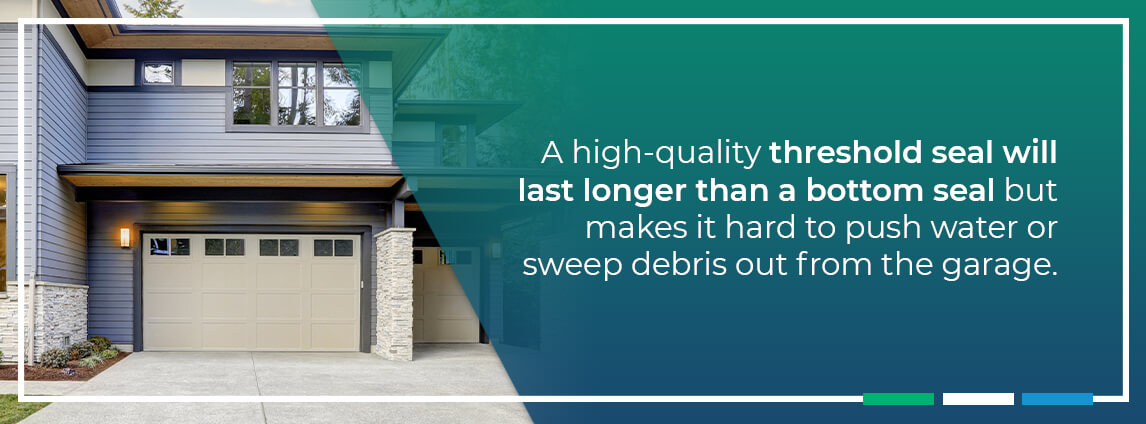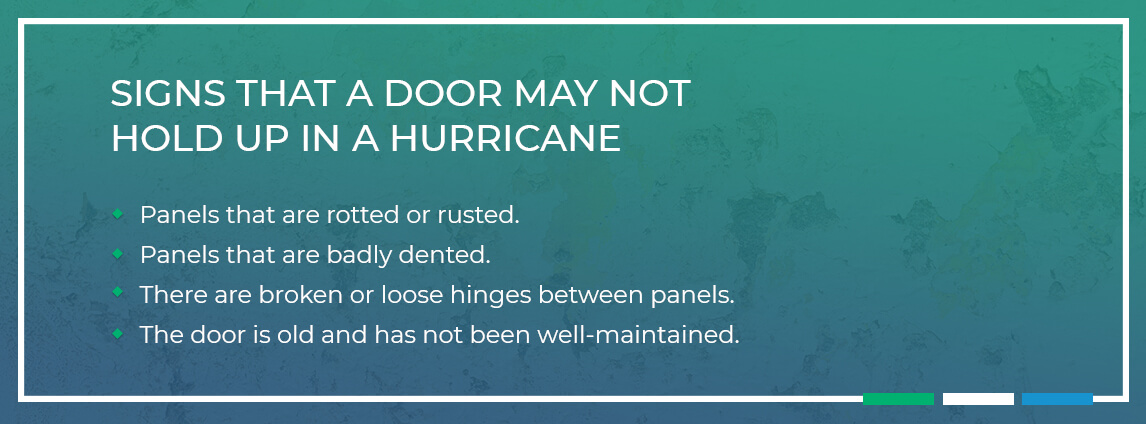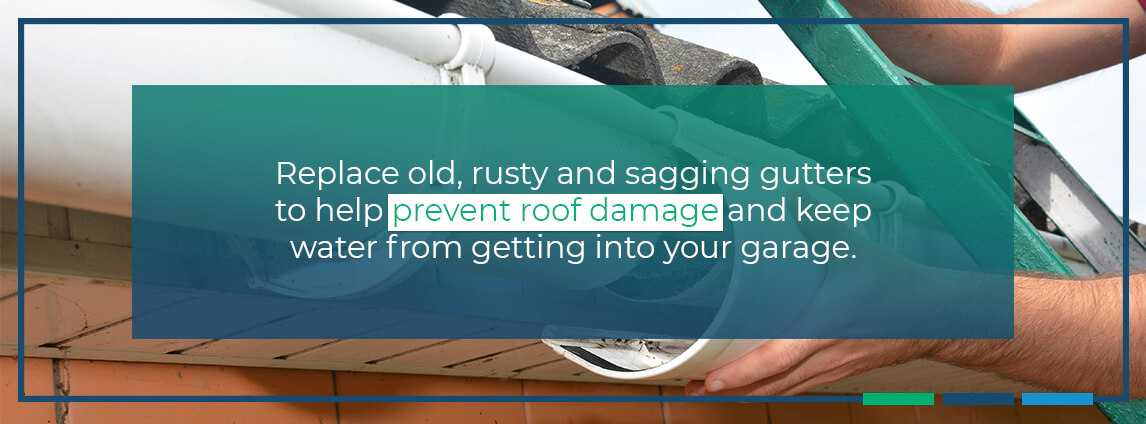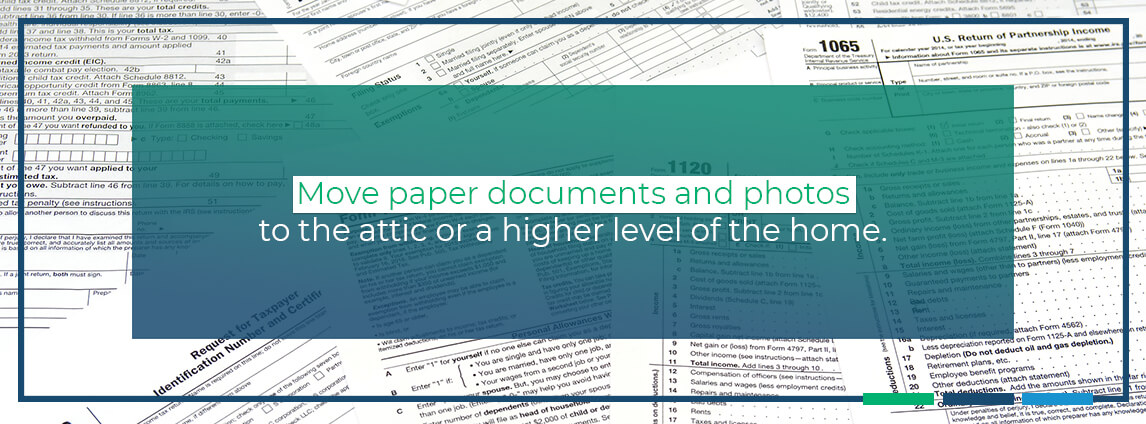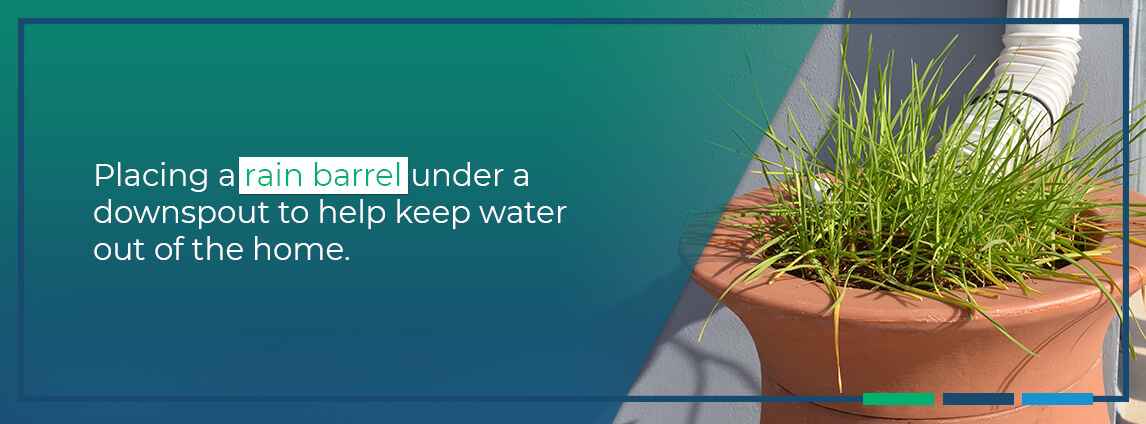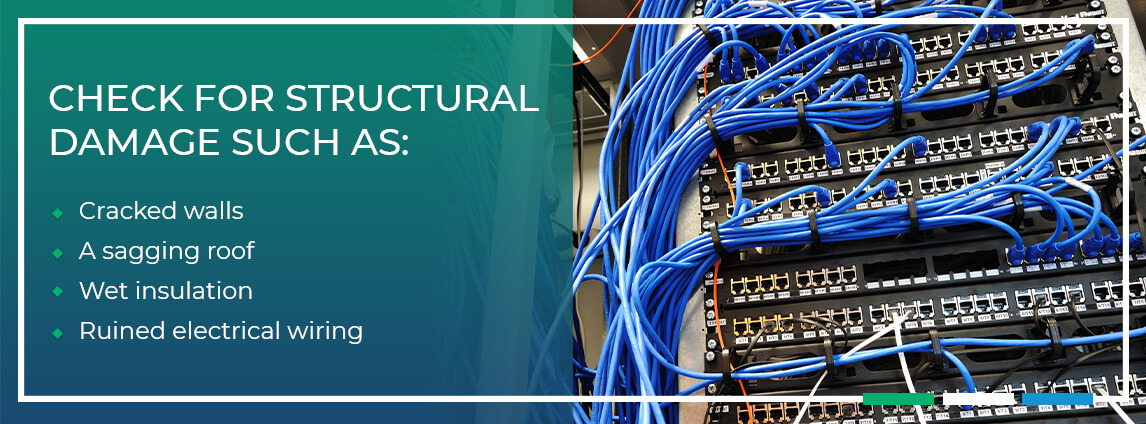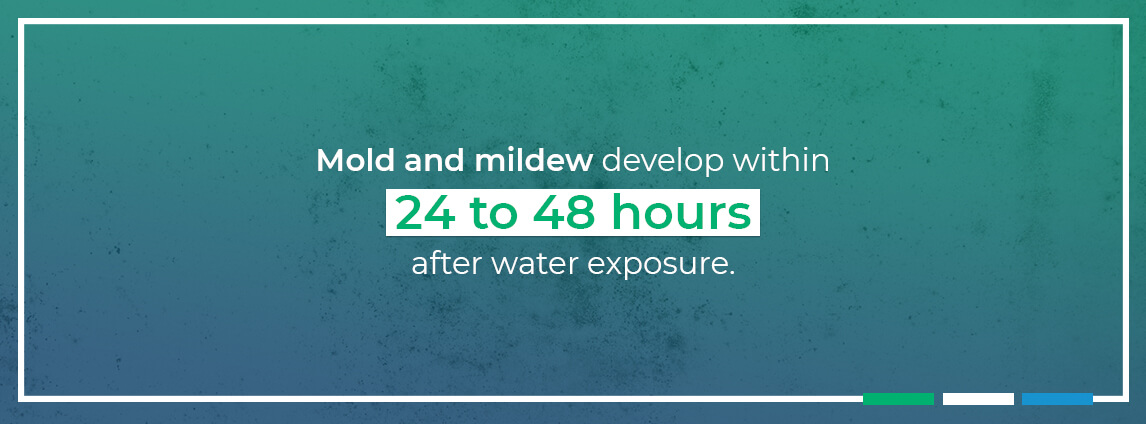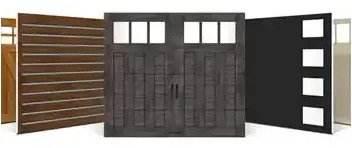Flooding is the most common natural disaster in the United States. Floods not only threaten safety, but can also result in costly repairs. The average U.S. flood loss from 2001-2010 came to more than 2.7 billion dollars.
Although none of the states are immune to flooding, certain regions are more vulnerable than others. Florida, for example, has experienced five federally declared disasters due to flooding since 2010. The Tampa area gets an annual average of 46.31 inches of precipitation per year, or almost four feet of water annually. Just two feet of water can carry your car away.
The sunshine state does get plenty of sun, but tropical beauty can mean occasional heavy rain. With the right preparation, you and your family can safeguard your home from flooding and continue to enjoy the Florida weather. And when it comes to preparing a home for a storm, safety begins with the garage door.
During a hurricane, the garage door is usually the first thing to go. Garage doors are often lightweight and are opened and closed frequently, which wears out the weatherstripping. An old or weak garage door can be problematic in a hurricane. If it comes off the track, it opens a space in your home. This can cause other areas to weaken and possibly collapse. Make sure your garage door is sturdy and in good condition to protect your home from flooding and other storm-related damage.
If you keep anything in your garage — whether it’s your car, tools or general storage items — flooding can be a disaster. This point of entry to your home can all too easily allow water to enter your garage and destroy your treasured items if your garage door is not properly sealed or maintained.
Fortunately, there are several steps you can take to help protect your garage from flooding. In Florida or other coastal areas where tropical storms and hurricanes are a common occurrence, it’s always smart to be prepared. Here are some of the top preventative measures you can take.
Table of Contents
- Garage Flooding Solutions
- What to Do If Your Garage Floods
- Trust Banko for Florida Garage Door Weather Protection
Garage Flooding Solutions
1. Seal Any Leaks or Cracks
Take the time to look over the walls, roof and floor of your garage for any cracks that might allow water to seep in. This may seem like a time-consuming process, but it’s usually a simple matter to seal those cracks. Failure to do so could mean disaster if a hurricane strikes or flood waters come through.
If you notice a crack in the floor, follow these steps:
- Remove large pieces of debris from the crack.
- Sweep up all debris around the crack. Use a cleanser to remove any oil from the area to ensure the filler adheres to the floor. Vacuum the crack and the surrounding area.
- Cut the nozzle off the bottle of concrete filler to the size of the crack and slowly fill in the crack.
- Smooth over with a trowel to remove excess filler.
- Let the filler cure overnight.
If there are cracks in the walls, you’ll want to follow similar steps as above:
- Remove dirt and debris from the crack and surrounding area.
- Patch the crack with concrete or another sealant. An epoxy product or expandable polyurethane can be used to fill a crack up to a half-inch wide. Use cement for larger cracks.
Make sure you fill in ceiling cracks, too, because storm water on the roof can lead to serious leaks. If the garage ceiling is drywall, follow these steps to close up cracks:
- Drill drywall screws into the ceiling to attach to wooden support blocks.
- Use a scraper to widen the crack.
- Place drywall tape over the crack. Apply a layer of joint or drywall compound and push through the tape into the crack.
- Smooth over with a damp sponge.
- Sand, prime and paint the newly filled-in area.
With a few tools and a little time, you can repair cracks in the walls, floor and ceiling and help keep water from getting inside. For larger repairs and structural damage, contact a trusted garage door technician to help you flood-proof your garage. It’ll save you lots of money and hassle in the long run.
2. Inspect Your Garage Door
Once you’ve made sure your garage is sealed against flooding, it’s time to check your garage door. If there are any holes or gaps or if the rubber strips are worn away, get it fixed as soon as possible. Your garage door is your main line of defense against incoming water, so it’s important to keep it secured.
To determine whether or not your garage door needs a makeover, ask yourself the following questions:
- Are there any noticeable cracks or holes?
- Is there a gap at the bottom of the door?
- Does the weatherstripping need replacing?
If you answer yes to any of these questions, no problem. A lot of garage door issues are easy to fix. If you find a hole in the garage door, however, follow these steps to fill it in:
- Turn off the garage door opener.
- Smooth the insides of the hole with sandpaper and blow away dust using compressed air.
- Fill the hole with spray foam insulation.
- From outside the garage, smooth over the foam with a wooden paint stick.
- Sand over the hole on the outside of the door until the foam is even with the garage door.
- Repeat this step on the inside of the garage.
- Paint over the hole to match the rest of the garage door.
You may also need to remove and replace the bottom seal of your garage door. A bottom seal is a strip of rubber or vinyl that attaches to the bottom of the garage door and keeps out insects, wind and water. Some garage doors have an aluminum track that holds the seal in place. It might be time to get a new bottom seal if you can see light or feel a breeze at the bottom of the door.
Instead of replacing the bottom seal with a new one, you could install a threshold seal. A threshold seal attaches to the floor rather than the bottom of the door. A high-quality threshold seal will last longer than a bottom seal but makes it hard to push water or sweep debris out from the garage.
Water and wind can get in through the sides of the garage door too, but weatherstripping can come to the rescue. Purchase a weatherstripping kit and aim to install it at the same time as a new bottom or threshold seal.
You’ll want to replace any rotting or cracked trim if your garage door is framed by wood. If the trim is still in tip-top shape, give it a fresh coat of paint for an extra layer of protection.
If your garage door doesn’t close all the way, you may not need to replace anything. It could be a simple matter of debris or other objects blocking its way or the sensor might need attention. Take these steps to make sure you’ve considered all the possibilities:
- Clear out any debris that may be blocking the garage door and any objects that block the sensor. The sensor light may go out or blink if it is blocked, depending on the garage door you have.
- Check the settings in the garage door opener. Refer to the manual or call a technician. You should be able to adjust the setting with a screwdriver.
- Use a toothbrush to clean the track and rollers and then smooth the way with a non-silicon-based lubricant. Finish by cleaning with a cloth.
- You may just have to replace the garage door opener’s batteries.
Lastly, your garage door may need an alignment if you notice the door struggles to move up or down. To adjust a garage door:
- Make sure the door is closed.
- Loosen the screws that secure the tracks.
- Adjust the track position. Use a level to make sure the track is completely straight.
- Once aligned, tighten the screws.
Don’t hesitate to call a professional to help you make your garage as flood-proof as possible. Your garage needs to be prepared to take on any storm for the overall protection of your home.
3. Replace Your Garage Door
If your garage door is old and worn out, with rotting wood or dented steel, you can expect little garage door flood protection. That means it’s well worth replacing before the next big storm.
While there are no completely flood-proof garage doors, for the best protection against hurricanes and flooding, we recommend you install one of our hurricane rated garage doors. These doors are specially designed to withstand the elements — particularly the tough rain and wind that comes with a Florida tropical storm or hurricane.
Here are some signs that a door may not hold up in a hurricane and more reason to consider protecting your garage with a hurricane rated door:
- Panels that are rotted or rusted.
- Panels that are badly dented.
- There are broken or loose hinges between panels.
- The door is old and has not been well-maintained.
When purchasing a new garage door that is durable and can stand up against a storm, consider the differences in garage door materials. Just like any part of your home’s exterior, garage doors need occasional care and attention to ensure they function at their best and add to the overall beauty of your home.
A fresh coat of paint can help protect your door’s surface from weather-related corrosion. To paint your garage door:
- Prep the garage door by removing rust or chipped paint and then sand these areas.
- Clean the entire surface with a sponge and all-purpose cleaner.
- Spray down with a hose.
- Dry with towels and let air-dry for an hour.
- Tape off handles, locks, windows and trim.
- Turn off the opener and manually move the door, placing the bottom of the door at a comfortable height. This way, you can lower the door as you go.
- Apply a primer, bottom to top, from inner panels out. Let dry for 12 hours.
- Apply paint.
New paint is an easy way to make your home pop with color while reinforcing its durability.
4. Make Sure You Have Proper Drainage
If your street’s gutters and drains overflow, the excess water may come straight for your home. For added protection, you may want to install a French drain in front of your garage to stop that excess water before it reaches your garage door.
If you do install a French drain system, be sure it is set up so the water drains off to a safe location — not to a neighbor’s yard or public sidewalk. Follow these steps to install a French drain:
- Locate a safe area of your yard for water drainage.
- Mark the new route with striping paint spray.
- Use a shovel to dig a six-inch-wide trench along the spray-painted route. The trench should have a depth no greater than the nearest foundation.
- Add three inches of gravel to the bottom of the trench.
- Use landscape fabric to cover the trench, on top of the gravel. Leave excess fabric.
- Place a drain pipe on top of the fabric lining. Cover the pipe completely with gravel, leaving about five inches between the top of the gravel and the ground’s surface.
- Fold excess fabric over the gravel, creating an overlap.
- Fill the trench with sand and then topsoil using your shovel. Cover with turf.
- Place a layer of stones around the opening of the drain pipe.
You also want to make sure your gutters are clear and in good condition. The best way to clean gutters is with a pressure washer. Replace old, rusty and sagging gutters to help prevent roof damage and keep water from getting into your garage.
An aluminum gutter is a great choice because it’s lightweight, inexpensive and won’t rust. Copper gutters may be the best choice for historical homes or aesthetic beauty. Copper won’t rust but will age to a lovely pale green color over time. Keep in mind you’ll need one downspout for every thirty to forty feet of gutter. Make sure there aren’t any objects blocking your drain systems on the ground.
You may also want to consider hiring a professional to install flood vents in your garage. A flood vent can allow water to flow freely in your garage and drain before it enters your home. Flood vents also help prevent pressure from building against your foundation. If you live in an area that experiences frequent severe flooding, and if you can prepare your garage to be a space for water, flood vents might be the way to go.
5. Store Items Strategically
If you store things in your garage, be sure to store the items most susceptible to water damage as far back as possible. Assuming you have properly sealed any leaks at the rear of your garage, this should provide a little extra protection. You’ll also want to:
- Use plastic sealed containers and duct tape.
- Raise furniture on concrete blocks.
- Cover unstored items with plastic.
- Move paper documents and photos to the attic or a higher level of the home.
- Use a ramp to elevate items like a lawnmower. Elevate any machinery or tools that rust or use electricity.
Although there are no guarantees that water won’t reach your belongings, follow the above steps for a greater chance that your household items and valuables will survive a storm intact. In general, move what you can to a higher level and use plastic to protect what you can’t store elsewhere.
6. Consider Your Landscaping
You can surround your home with porous and absorbent materials while adding curb appeal. Choosing a landscape design that uses the right plants and mulch for high-water areas can help drain water into the ground and prevent the spread of polluted water. Prepare your home for flooding on the outside by:
- Creating a swale, or a depression in the landscape, to redirect water. Line the lowest points with rocks and place deep-rooting plants on the slopes. Make sure the swale directs water to a safe area.
- Creating a rain garden. Use plants with a high tolerance to wet soil and place them in the middle of the garden. Rain gardens help filter impurities like pesticides and other chemicals. Choose plants that can survive droughts, too. Some good flowering plants include goldenrod, swamp sunflower and spider lily. Virginia willow, button bush or wax myrtle make excellent shrubs for a rain garden. Another plus to a rain garden? You’ll find butterflies visiting more often.
- Using a heavy mulch that won’t float away as easy as lighter mulch. Avoid pine or cedar bark chips and use pine bark nuggets instead. Thick layers of pine straw mulch, gravel or rock works well too. Be sure to use fabric under the gravel, as it can be difficult to remove.
- Placing a rain barrel under a downspout to help keep water out of the home.
- Converting asphalt or concrete driveways to gravel or brick.
If you give attention to your yard and landscape when preparing your home for a storm, you’ll feel more secure and can enjoy the visual benefits of a purposeful garden.
7. Use Sandbags
Sandbags alone won’t keep water out, but they do help keep plastic sheets on a door. Sandbags weigh thirty to thirty-five pounds, are made of burlap or commercial plastic and are filled with sand or soil. Your local government may or may not provide sandbags for free if flooding is common in your area. Here is how you can use sandbags to protect your garage from flood water:
- Lay a plastic tarp in front of the door.
- Bring the tarp up as high as you expect water to reach. Fasten into place with screws.
- Place the first row of sandbags on top of the plastic and next to each other, against the door. Use as many sandbag levels as you want. Place them parallel to the flood water and with the openings facing against water flow.
- Place the second row of sandbags atop of the first row by placing the first bag halfway across the first bag in the bottom row. The goal is to layer the sandbags in a pyramid shape.
- Step on each sandbag to push it in place.
- Build as many layers as you want. Do not block all entrances to the home with sandbags.
You can also purchase another type of flood barrier like a Quick Dam. A Quick Dam absorbs water and expands with the water it contains, creating a barrier. Quick Dams do not work with saltwater.
What to Do If Your Garage Floods
Sometimes, no matter how much we prepare, Mother Nature takes control. Nevertheless, once a storm settles, you can take steps to safely salvage what you can.
After a flood, you’ll first want to get to your fuse box and turn off the power to ensure that you’re safe from any potential electrical dangers. Always have a flashlight handy. Next, check for structural damage and take pictures to show your insurance company. Look for:
- Cracked walls
- A sagging roof
- Wet insulation
- Ruined electrical wiring
You’ll want to contact your insurance company as soon as possible.
Also, realize that your home may be contaminated with sewage or chemicals. Therefore, you’ll want to wear waterproof shoes, clothing and gloves to try to protect yourself from polluted flood water.
Check for a sagging ceiling and use lumber to support weak areas. Patch holes with boards or tarps until they can be repaired.
Once your insurance company permits you to do so, you can remove the water with a sump pump and a wet vac. Try to pump water ten to twenty feet away from the foundation to prevent it from re-entering the home.
You’ll also want to reduce moisture in the garage and home. Open doors and windows to circulate air. Use a dehumidifier, fans and window air conditioners to help lower humidity levels and to help dry out wet areas. Use towels to dry floors and walls. You may want to use a desiccant or a substance that absorbs water.
It’s important that you remove wet items like clothes and blankets immediately. Mold and mildew develop within twenty-four to forty-eight hours after water exposure. If an item has been wet for less than forty-eight hours, it may be cleaned, disinfected and dried completely. You can disinfect surfaces and control mold growth with a ten percent bleach solution.
Excess moisture in the home can warp wood and make doors and windows hard to open and close. Make it a goal to reduce humidity any way you can in your garage and home for a structure that is safe and secure.
Trust Banko for Florida Garage Door Weather Protection
If you’re concerned your garage door may not stand up to the tough Florida weather, Banko Overhead Doors offers free garage door inspections to make sure your garage is Florida storm-worthy. If it’s not, we’ll walk you through any recommended repair or replacement options.
And if it’s time for a new door, we have a large selection of garage door options, including hurricane rated garage doors to protect your garage and your belongings from the elements.
To find out more about how we can help you protect your garage or to schedule an estimate, repair or other garage door service in the Tampa Bay area and surrounding communities, contact us today.
Additional Resources on Garage Door Tips And Tricks:
- Tips and Tricks For Organizing Your Garage
- How to Tackle Spring Cleaning
- 5 Tips for Creating the Ultimate Man Cave

